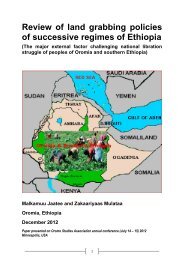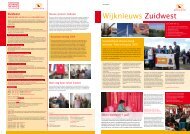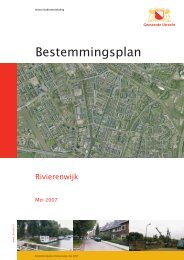freakonomics
freakonomics
freakonomics
You also want an ePaper? Increase the reach of your titles
YUMPU automatically turns print PDFs into web optimized ePapers that Google loves.
creature’s life, a creature who in the beginning is more helpless than the newborn of<br />
nearly any other species. This leads a lot of parents to spend a lot of their parenting<br />
energy simply being scared.<br />
The problem is that they are often scared of the wrong things. It’s not their fault, really.<br />
Separating facts from rumors is always hard work, especially for a busy parent. And the<br />
white noise generated by the experts—to say nothing of the pressure exerted by fellow<br />
parents—is so overwhelming that they can barely think for themselves. The facts they do<br />
manage to glean have usually been varnished or exaggerated or otherwise taken out of<br />
context to serve an agenda that isn’t their own.<br />
Consider the parents of an eight-year-old girl named, say, Molly. Her two best friends,<br />
Amy and Imani, each live nearby. Molly’s parents know that Amy’s parents keep a gun<br />
in their house, so they have forbidden Molly to play there. Instead, Molly spends a lot of<br />
time at Imani’s house, which has a swimming pool in the backyard. Molly’s parents feel<br />
good about having made such a smart choice to protect their daughter.<br />
But according to the data, their choice isn’t smart at all. In a given year, there is one<br />
drowning of a child for every 11,000 residential pools in the United States. (In a country<br />
with 6 million pools, this means that roughly 550 children under the age of ten drown<br />
each year.) Meanwhile, there is 1 child killed by a gun for every 1 million-plus guns. (In<br />
a country with an estimated 200 million guns, this means that roughly 175 children under<br />
ten die each year from guns.) The likelihood of death by pool (1 in 11,000) versus death<br />
by gun (1 in 1 million-plus) isn’t even close: Molly is roughly 100 times more likely to<br />
die in a swimming accident at Imani’s house than in gunplay at Amy’s.<br />
But most of us are, like Molly’s parents, terrible risk assessors. Peter Sandman, a selfdescribed<br />
“risk communications consultant” in Princeton, New Jersey, made this point in<br />
early 2004 after a single case of mad-cow disease in the United States prompted an<br />
antibeef frenzy. “The basic reality,” Sandman told the New York Times, “is that the risks<br />
that scare people and the risks that kill people are very different.”<br />
Sandman offered a comparison between mad-cow disease (a super-scary but exceedingly<br />
rare threat) and the spread of food-borne pathogens in the average home kitchen<br />
(exceedingly common but somehow not very scary). “Risks that you control are much<br />
less a source of outrage than risks that are out of your control,” Sandman said. “In the<br />
case of mad-cow, it feels like it’s beyond my control. I can’t tell if my meat has prions in<br />
it or not. I can’t see it, I can’t smell it. Whereas dirt in my own kitchen is very much in<br />
my own control. I can clean my sponges. I can clean the floor.”<br />
Sandman’s “control” principle might also explain why most people are more scared of<br />
flying in an airplane than driving a car. Their thinking goes like this: since I control the<br />
car, I am the one keeping myself safe; since I have no control of the airplane, I am at the<br />
mercy of myriad external factors.<br />
So which should we actually fear more, flying or driving?









